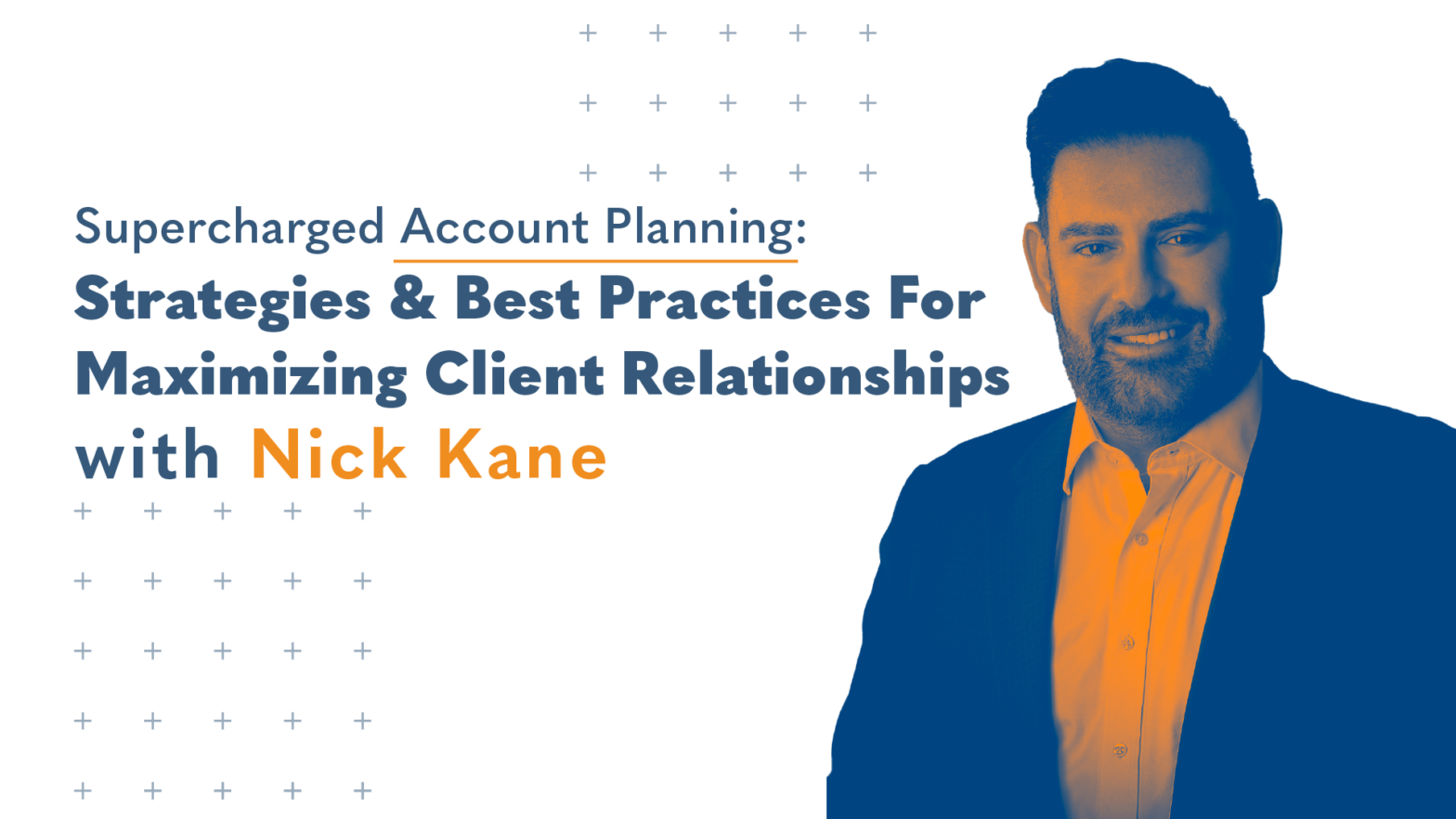How to Supercharge Your Account Planning

All sales organizations need new business to thrive and grow. As such, they often prioritize new accounts. However, in a rapidly changing and uncertain environment, new business can be a tough sell. For salespeople, this means tighter budgets, more decision makers, and longer sales cycles. Clearly, in times like these, organizations cannot just rely on new business to generate revenue.
This makes effective account planning essential. Rather than wait on fickle buyers, sellers do more for the customers they have. With account planning, you identify and target potential sales opportunities within existing accounts. In addition to upselling and cross selling, this means deepening relationships for mutual long-term rewards. Let’s look at how sales organizations can supercharge account planning to maximize success:
Why Account Planning
According to a study by the Account Planning Book of Evidence, account planning achieves impressive results. For example:
- 74 percent saw a better win rate
- 59 percent of companies realized more won deals than lost deals when utilizing account planning
A similar survey by Altify revealed more. Here, 72 percent of respondents said that account planning increased their understanding of their clients’ business.
More specifically, here are the key benefits for your organization:
- Maximize revenue
- Improve customer satisfaction
- Boost customer retention
- Provide a roadmap for account growth
One major advantage of increasing business with existing accounts is cost. Think of the time and resources your marketing and sales teams invest in developing new relationships. These may or may not prove fruitful. But with account planning, sellers build on the confidence and security they have already established.
Customer satisfaction is another benefit. Happy customers buy more. Therefore, all salespeople should ensure customers are satisfied. However, it’s easy to take established accounts for granted. This is especially true if they’re long standing and low maintenance. Account planning prioritizes the customers you have and demonstrates commitment to their success.
Of course, regular orders are great. But regularity can lead to complacency. So long as everyday buyers buy, we often don’t worry about them. However, if your sales team isn’t fully engaged, there’s a lot they can miss. For example, have competitors made inquiries? Are decision makers taking calls? Account planning stays on top of these changes to keep customers happy and retain their business.
In sales, change is constant. But uncertainty brings additional changes and challenges sellers cannot afford to miss. For example, new decision makers or budgets. As these things change, it’s increasingly difficult to forecast need and allocate resources. Therefore, your sales team must be proactive instead of reactive. With effective account planning, they’re better equipped to adapt.
Account Planning Challenges
Of course, pursuing new accounts has challenges. Mostly, these center around creating engagement, developing trust, and building relationships. While account planning avoids these, it has its own hurdles, including:
- Team buy-in
- Time management
- A customer’s willingness to share
Many sellers love the thrill of “hunting” for new business. However, account planning requires a different attitude and skill set. Mostly, these involve developing, growing, and nurturing accounts. Some reps may view these as tedious administrative tasks, but this stems from a fundamental misunderstanding of said goals.
Effective account planning requires more than periodic check-ins. It’s deepening relationships and achieving greater understanding of client needs. It’s less about the immediate sale than the long-term commitment to the client as trusted advisor. Plus, once sellers understand the reward and value, they are more likely to buy-in to the process.
Time management is another challenge. It can be difficult for reps to prioritize their time. Plus, with the different mindset of account planning, they might not know what to prioritize. This is especially true with larger accounts. Depending on size, some organizations develop formal account plans for their top 10-20 percent of clients. In this, reps learn to balance their tasks to reap the most reward.
A customer’s willingness to share is paramount. For this, reps depend on their contacts and advocates within the client’s organization. The stronger these relationships, the more customers share. This is the real key to account planning. Of course, sharing comes from trust. That starts with a seller’s initial outreach and engagement. However, it cannot end there. It needs to be strengthened over time.
Components of an Account Planning Strategy
There are several essential components of an account planning strategy. These include:
- Key contacts
- Account needs/goals
- Competitive threats
- Alignment
- Plan of action
With account planning, contacts are key. Therefore, you must know your accounts deeply and individually. This includes each person’s role and the influence they exert. For example, is your contact a primary decision maker or advisor? With account planning, sellers cannot take contacts for granted. They can’t assume today’s decision maker is tomorrow’s best contact. Always remember how each new relationship opens doors to new opportunity.
Another key is knowing the account’s needs and goals. With these, you can align their current problems with their long-range plans. Understand their position in their space and outside forces, such as the economy. Sellers must also recognize the account’s growth potential, including additional departments and affiliates. This can determine the best use of time and resources to ensure long-term success.
In addition, you must know your competition and the threats they pose. This includes who your account purchases from and what they buy. It also includes the extent of the relationship and their level of satisfaction. Of course, many companies keep this information guarded. That’s why having contacts who believe in your organization and solutions can give you the inside track. You not only know what the account needs. You know who and what you need to beat.
Once you know a customer’s goals and problems, you’re positioned to align their needs with your solutions. Of course, most sales organizations provide off-the-shelf solutions to solve a range of problems. However, are these the best solutions for this customer? Creating alignment is more than presenting a quick fix. It’s having the foresight to prevent future problems and provide long-term value. Sometimes, this requires customized solutions.
A plan of action includes connecting your best resources with key players from the customer’s organization. For example, is there a top-level meeting you need to facilitate between their executives and your own? Is there a tech specialist you should enlist? Also, what specific steps are needed to implement the solution? This includes delegating responsibilities, scheduling meetings, and formalizing agendas.
Critical Activities and Best Practices
Expanding your opportunity within existing accounts sounds simple. However, success requires a concerted effort. Here then are some critical activities and best practices:
- Research, data, and KPIs
- Communication/collaboration
- Goals and objectives
- Keep it fresh
Research is essential. To grow your opportunity, you must understand each aspect of the account. This means preparing your approach. For example, will you sell the same solutions to new players, or will you sell new solutions to new players? Of course, this is based on need. And different offices of the same account often have different needs, goals, and objectives. Also, new players come with new pain points. That’s why research is critical to account planning success.
Data is another key. This starts with where sellers get the data they need. Today, database and prospecting tools, such as ZoomInfo, Seamless AI, and LinkedIn Sales Navigator, help sellers find new contacts. Of course, this is essential for all sellers, such as BDRs and SDRs. But for sellers working in existing accounts, these remain an invaluable resource, and marketing should support these efforts.
KPIs are essential for evaluating your endeavors. Companies that use KPIs to track account planning are much more likely to hit sales targets.
Also, key metrics show the success of leveraging your CRM. This includes sales and marketing automation and other sales enablement platforms. Here, alignment between sales and marketing is key to account planning. Data on customer activity and engagement is critical to course correct and guide your roadmap.
Communication and collaboration are also essential. In successful account planning, sellers know everyone’s roles and responsibilities. This cuts across the organization, from BDRs to account managers, sales leaders, and tech experts. You must align the activities of these professionals to the goals of your account plan. This reduces finger-pointing, prevents roadblocks, and promotes accountability. It ensures alignment and consistency of activity, which adds value.
Setting goals and objectives helps sales reps stay focused and measure their progress. These must be time bound to ensure everyone executes the plan and hits their targets. Of course, things change. Targets shift. Therefore, we must be flexible enough to adjust activities and invest time where it counts.
Also, as things change, keep it fresh. You want to review account plans on a consistent basis. Depending on the size and level of sophistication, this could be every 30, 60, or 90 days. But consistency is key. This ensures your reps continue to meet the evolving needs of your customers.
Of course, for many sellers, there’s no substitute for the thrill of new business. And for many sales organizations, new business is vital for growth and revenue. However, today, with so much uncertainty, reps and organizations cannot rely on new business alone. We hope this helps you develop an effective account planning strategy to achieve greater long-term productivity and growth.

- Account Planning (16)
- Awards (42)
- Client Testimonial (37)
- Personal Branding (21)
- Podcast (12)
- Research (77)
- Sales Career Development (90)
- Sales Coaching (165)
- Sales Consulting (141)
- Sales Culture (181)
- Sales Enablement (380)
- Sales Leadership (112)
- Sales Management (268)
- Sales Negotiation (11)
- Sales Prospecting (136)
- Sales Role-Playing (19)
- Sales Training (242)
- Selling Strategies (279)
- Soft Skills (78)
- Talent Management (101)
- Trusted Advisor (29)
- Virtual Selling (57)
- Webinar (13)




























